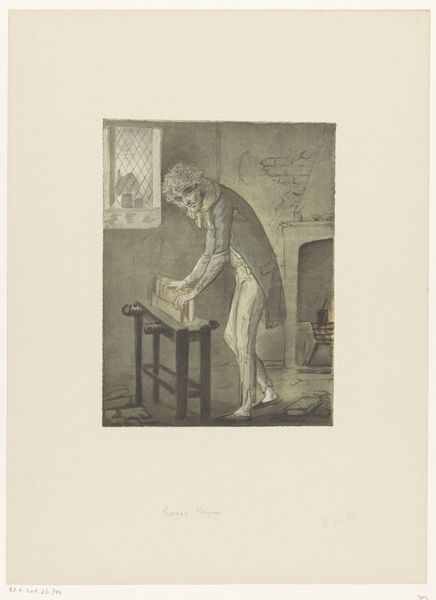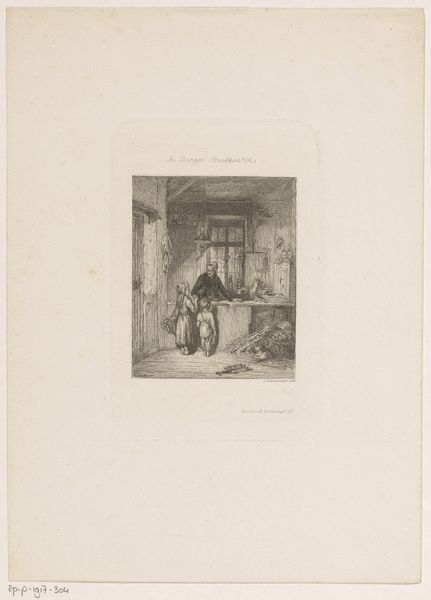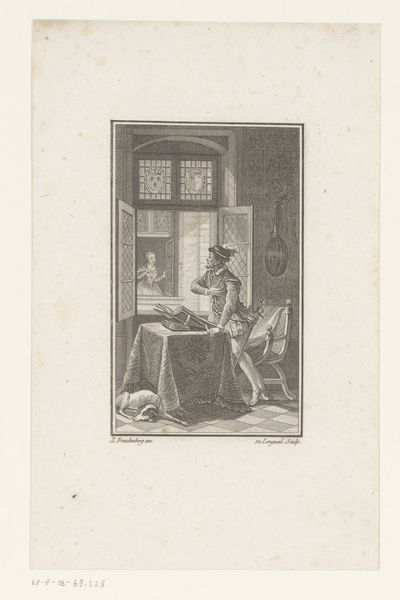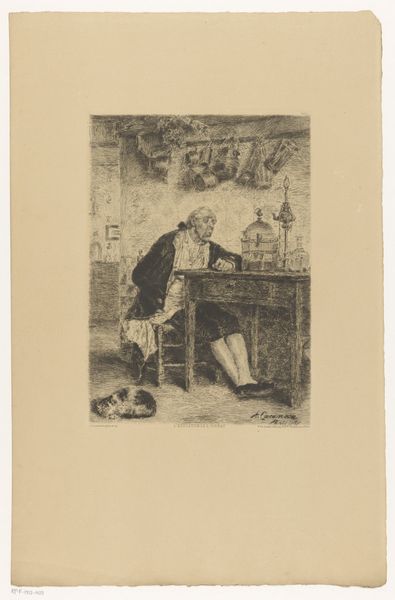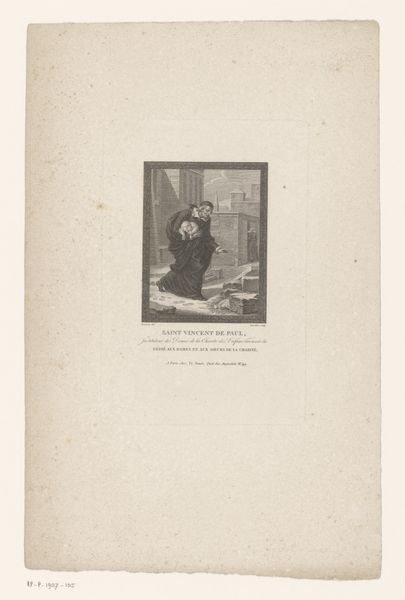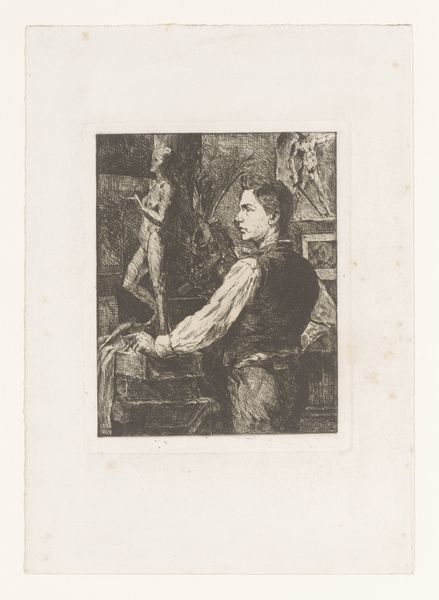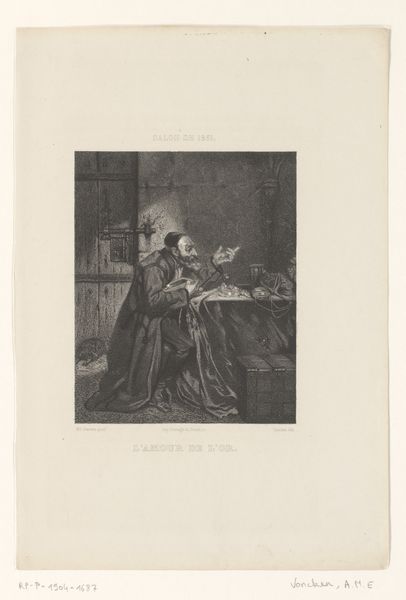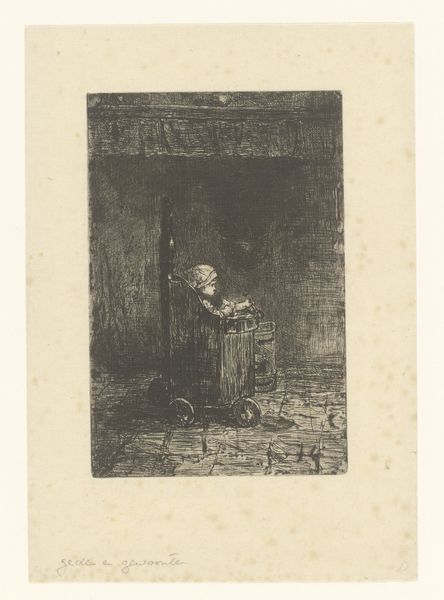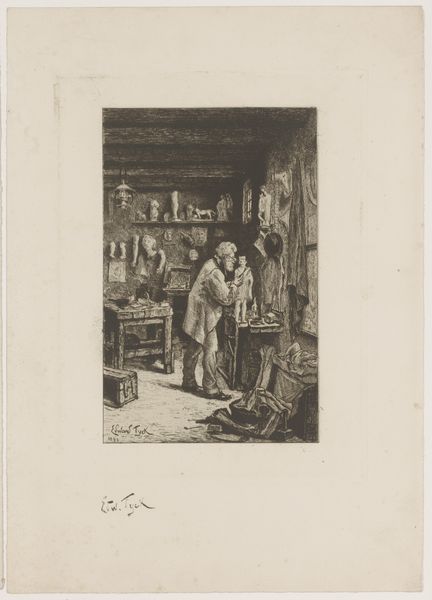
print, engraving
portrait
line
genre-painting
engraving
realism
Dimensions: height 222 mm, width 149 mm
Copyright: Rijks Museum: Open Domain
Editor: This is "Portrait of bookbinder Roger Payne," an engraving dating roughly from 1800 to 1900. The scene feels intimate; he’s working diligently in what seems like a cramped room. How can we interpret this work in its historical context? Curator: It's fascinating to consider the image within the rise of the print market and the democratization of art. This wasn’t some grand, commissioned portrait for the elite. Prints like this, depicting a craftsman, were part of a burgeoning interest in the lives and labors of everyday people. Who do you think would purchase such an image, and what would it represent to them? Editor: I guess it would be someone who admires the craftsmanship of bookbinding, maybe other artisans. It would almost be a celebration of labor, unlike typical aristocratic portraiture. Curator: Precisely! Consider how this fits into the wider visual culture of the era. Genre scenes like this played a crucial role in shaping ideas about work and social class. These prints were accessible, circulated widely, and shaped perceptions. Would you say this image romanticizes or realistically depicts Payne’s work? Editor: It's difficult to say without knowing much about his life. The scene is rather austere, not idealized. Perhaps that's part of its charm; it's relatable. It does strike me that by recording these scenes, art became increasingly democratic. Curator: I think you've pinpointed something essential. It's about shifting artistic power and representation away from the traditional patrons to include a wider scope of individuals, experiences and class dynamics within society. Editor: Thinking about this image, not just as art but as a social artifact, definitely changes how I understand its importance. Curator: Indeed! Hopefully, this helps understand not only the artwork, but the culture that shaped it, and how it, in turn, helped shape society.
Comments
No comments
Be the first to comment and join the conversation on the ultimate creative platform.
